Photo

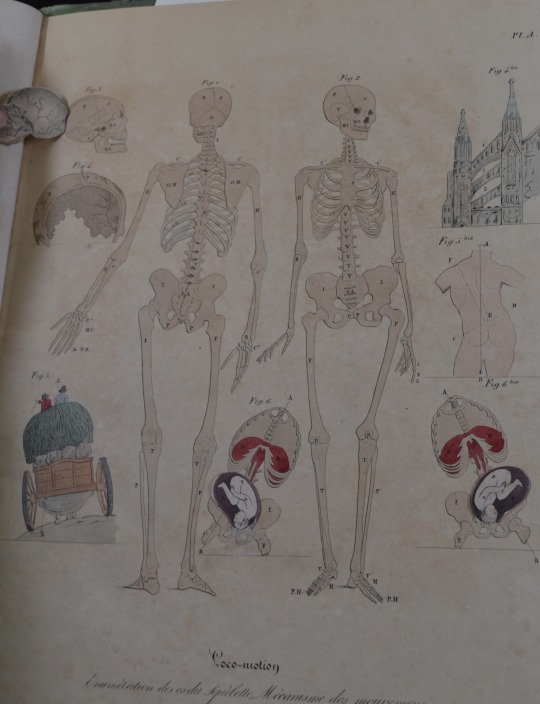
Who doesn’t love a good flap anatomy? Scientific printed books with interactive components date from the Renaissance onward, and this example - Joseph Achille Comte’s Physiologie pour les colléges et les gens du monde - was published in 1837.
100 notes
·
View notes
Photo
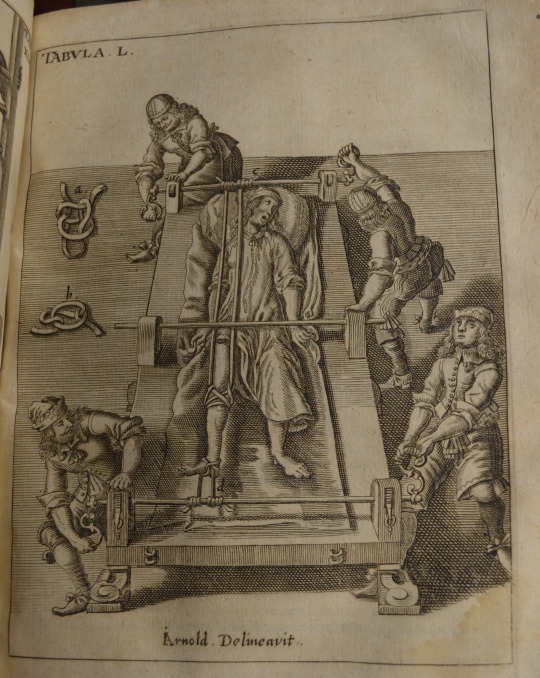
It can be difficult to drag yourself out of bed on Monday mornings, but we imagine that this poor gentleman would like nothing more than to get up and get going! Believe it or not, this illustration from a 1666 edition of Johannes Scultetus’s Armamentarium Chirurgicum Bipartitum isn’t meant to depict a form of torture. Instead, it shows a method for treating dislocations of the joint - although given that man’s expression, maybe it’s a fine line between the two?
49 notes
·
View notes
Photo

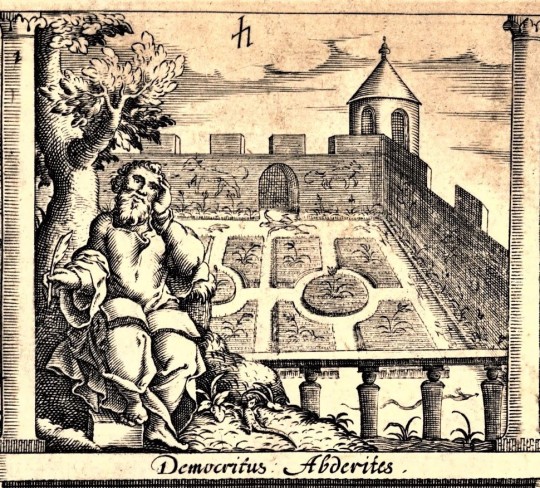

Post-Election Melancholy
We don’t know if Robert Burton had a section on post-election depression in his famous 17th-century treatise on The Anatomy of Melancholy, but the engraved title page from our copy of the 1632 4th edition, printed at Oxford by John Lichfield for Henry Cripps, with the engraving by Christof Le Blon (grandfather of the more famous printing innovator Jacob Christoph Le Blon), bears at least two figures that seem to reflect our mood on this day after Election Day. Of the first, Burton writes:
Old Democritus under a tree,
Sittes on a stone with booke on knee … .
The seat of blacke choler to see.
Over his head appears the skye,
And Saturne Lord of Melancholy.
Of the second, he writes:
Hypocondriacus leanes on his arme,
Winde in his side doth him much harme,
And troubles him full sore God knowes,
Much paine he hath and many woes.
About him pottes and glasses lye,
Newly brought from’s Apothecary,
This Saturne aspects signify,
Tou see them portraid in the skye.
And one last word from Burton:
When I lie, sit, or walke alone,
I sigh, I grieve, making great moane,
In a darke grove, or irkesome denne,
With disconents and Furies then,
A thousand miseries at once,
Mine heavy heart and soule ensconce.
All my griefes to this are jolly,
None so soure as Melancholy.
<SIGH!!>
122 notes
·
View notes
Photo
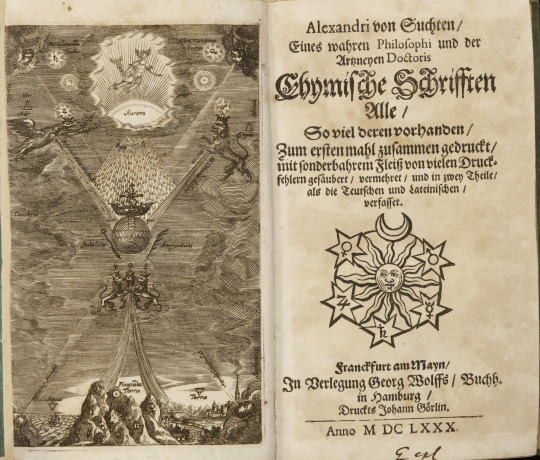
We love a good alchemical frontispiece, and this one, from Alexander von Suchten’s Chymische Schrifften, is a fantastic example! All of the lettering is a bit difficult to decipher, but we can make out the planetary symbols on the top part of the page, in the heavens, while the elemental symbols are down below in the mountains (more of that alchemical/astrological connection we’re always talking about!). The four winds/cardinal directions seem to be represented in the four corners, and we can also spot the symbols for the four classical elements of earth, air, fire, and water.
Mercury occupies a very prominent position, perhaps due to the importance of mercury as a key ingredient in the creation of the Philosopher’s Stone. The three lions also have alchemical symbols over their heads, and we think they’re mercury, salt, and sulphur, which are the three primal elements in Paracelsian alchemical thought. That would make sense, as it seems that the streams pouring out of the lions are combining to create the other elements shown below.
Can anyone help us interpret any of the other symbolism?
37 notes
·
View notes
Photo
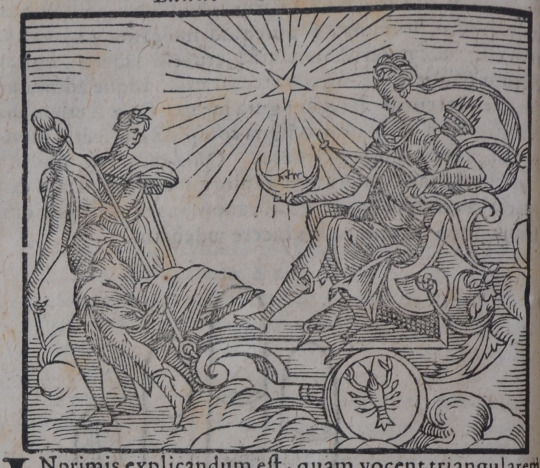
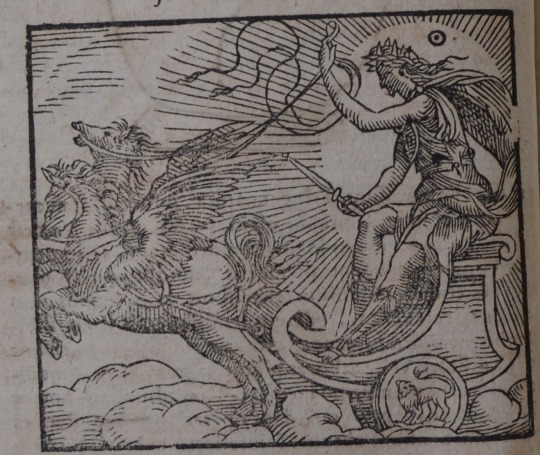



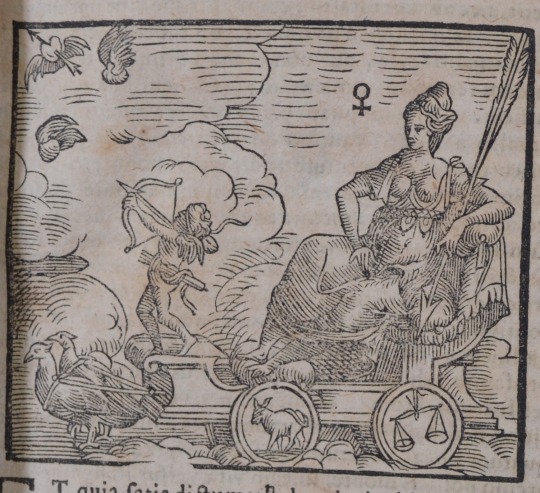

Happy Mythology Monday! We’ve noted before how astrology, metallurgy (and by extension, alchemy), and classical mythology were often closely connected during the early modern period. These woodcuts, from Johannes ab Indagine’s Introductiones apolesmaticae in physiognomiam, astrologiam naturalem, complexiones hominum, naturas planetarum, are another example of this. From the top, we have personifications of the Moon, the Sun, Jupiter, Mars, Saturn, Venus, and Mercury, and each one is accompanied by their corresponding alchemical symbol. If you look at the chariot wheels, you’ll notice that they contain various Zodiac signs. Which one are you?
154 notes
·
View notes
Photo

Brains are zombies’ delicacy of choice, and this woodcut from Antonius Novarinus’s Anatomia Curiosa looks like a feast! Novarinus’s text dates from 1681, but most of its illustrations are modeled from examples that appeared in earlier anatomical texts. For example, this image is clearly inspired by Johannes Dryander’s Anatomiae capiti humani, which was first published in 1536. Look here to see what we mean.
51 notes
·
View notes
Photo

The hand-colored illustrations from early to mid-19th century medical texts are some of the most striking images in our collections. This example comes from Sir William Adams’s A Treatise on Artificial Pupil, printed in 1819 in London, and shows how to make an artificial pupil by excising part of the iris.
210 notes
·
View notes
Photo


Is there any better way of marking up text than a manicule? Manicules (the word is Latin for little hand!) show up fairly frequently in early modern texts as a way of indicating passages that readers found noteworthy.
We found the top example in the Kleine Wundartzney des Lanfranci, a 1528 German edition of the Italian surgeon Lanfranco of Milan’s writings, and the bottom example comes from Johann Wolff’s Lectionum memorabilium et reconditarum. We have to admit that we’re partial to the top manicules - they’re very elegant and graceful!
70 notes
·
View notes
Photo
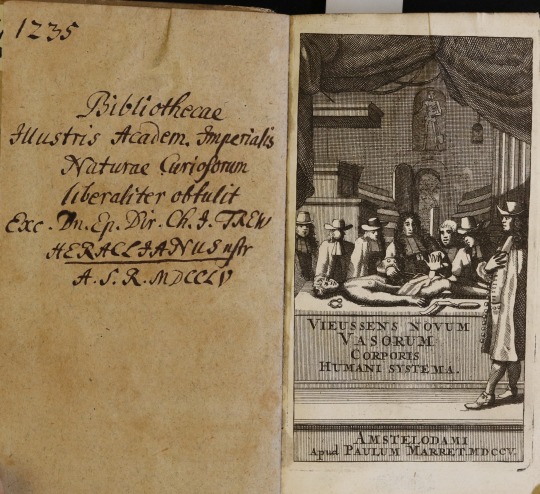
Oh, you lucky people, we managed to uncover another anatomical frontispiece for you! This one comes from Raymond Vieussens’s Novum Vasorum, a work dedicated to the anatomy of the cardiovascular system. Like so many other early modern anatomical frontispieces, it takes place in what is clearly an anatomical theatre, with the anatomist performing the dissection with his own hands before a crowd of onlookers.
We’re also rather taken with the inscription. That handwriting is quite impressive!
18 notes
·
View notes
Photo

Happy Title Page Thursday! This example introduces a 1757 edition of the Swiss anatomist and naturalist Albrecht von Haller’s Elementa Physiologiae Corporis Humani, a work of physiology and anatomy. While the book doesn’t have a full-page elaborate frontispiece, it does feature this thematically appropriate title engraving of two tiny cherubs showing off their anatomical drawings in front of what appears to be a rather unfortunate ungulate.
21 notes
·
View notes
Photo

Happy Frontispiece Friday! This image comes from John Bulwer’s Chirologia, a 17th century work dedicated to the language of the hand. While Bulwer’s system of hand gestures influenced modern British sign language, he didn’t necessarily think of gestures as solely a means of communication among the deaf. Rather, he saw the use of manual languages as the closest thing to a “universal tongue” that could be understood by all people.
This frontispiece uses symbolic imagery to represent the language of gestures. In the center, we see a hand with a face in its palm—somewhat strange, but indicative of the hand’s ability to speak. Water pours from the face’s mouth into the so-called “Cisterna Chirosophiae:” The Cistern of Chirosophy. It is flanked by two allegorical figures. The one on the left represents Nature, with her customary many breasts, and in this case she is explicitly identified as “Natura Loquens,” or the Natural Speech. The figure to the right is Polyhymnia, the Greek muse whose domain includes eloquence and pantomime. Below them are various hand gestures and their meanings, including eloquence, logic, and science.
39 notes
·
View notes
Photo
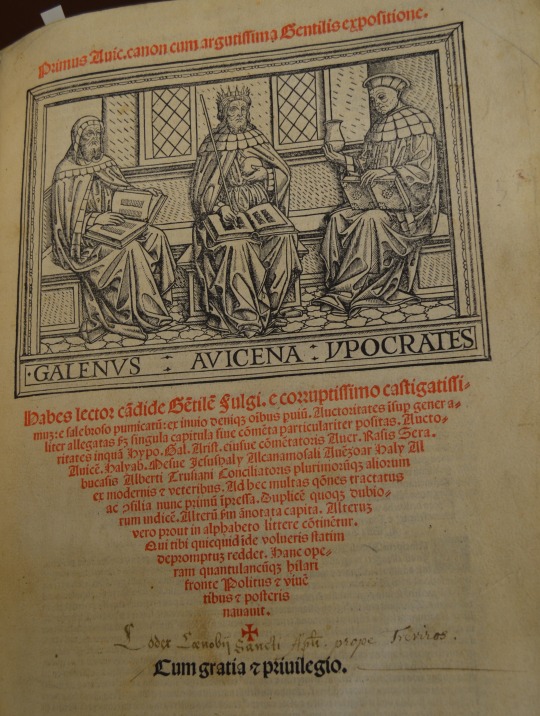
For this Woodcut Wednesday, we’re turning to a 1510 edition of the Canon of Avicenna, one of the most important medical texts of the medieval and early modern periods. This particular copy was printed in Pavia, Italy by Jacob de Burgofranco. The woodcut on the title page portrays the three great giants of 16th century medicine: the Roman physician Galen is on the left, the Arabic physician Avicenna is in the center, and the Greek physician Hippocrates is on the right.
65 notes
·
View notes
Photo
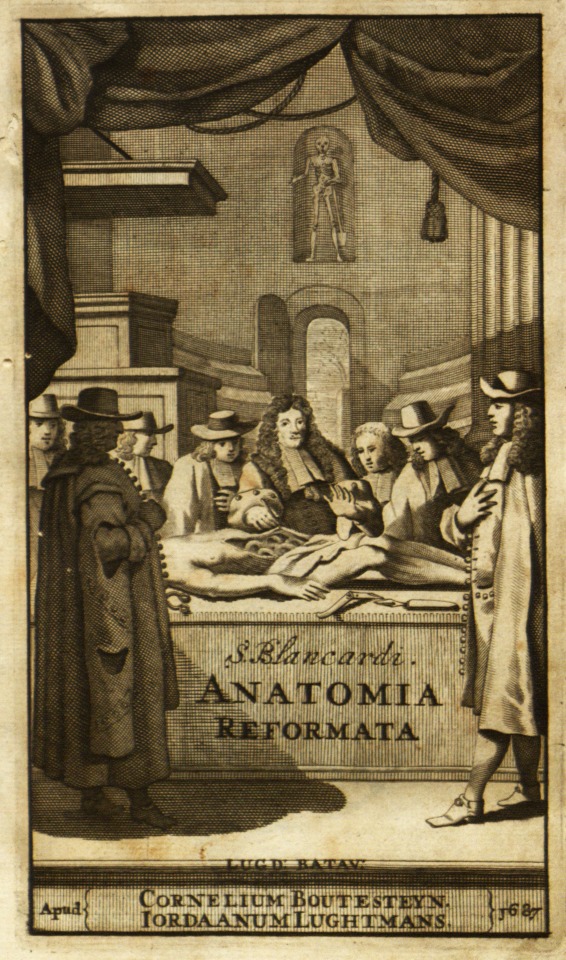
For last week’s Frontispiece Friday, we showed you the frontispiece from one of Steven Blankart’s anatomical texts (check it out here). This week, we’re offering up another Blankart frontispiece, this one from the Anatomia Reformata, published in 1687. While both of them feature Blankart presiding over the dissection of a cadaver, there are some notable differences between the two. The spectators in last week’s frontispiece were mostly dressed in garb reminiscent of classical Greece and Rome, but here everyone wears clothing typical of the 17th century Netherlands. This image also contains fewer allegorical flourishes and is much less detailed overall. We admit that we prefer the more elaborate frontispiece, but perhaps you feel differently!
26 notes
·
View notes
Photo

We love the frontispiece to Johann Cardilucius’s Artzneyische Wasser und Signatur-Kunst because we have a love of any frontispiece that includes references to classical mythology. Here we see the Greco-Roman gods as the personifications of various metals - Luna is Silver, Venus is Copper, Jupiter is Tin, Mercury is Mercury (surprise!), Saturn is Lead (note how he’s eating his own baby, a reference the myth of the Titans), Mars is Iron, and the Sun is Gold.
But what exactly are those triangles at the bottom of the page? Let’s take a closer look.

Here we have the Sanguine triangle, surrounded by the Zodiac symbols for Libra, Gemini, and Aquarius.
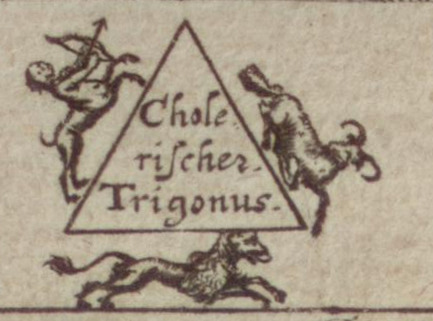
Then the choleric triangle, surrounded by Leo, Aries, and Sagittarius.

Up next is the phlegmatic triangle, with Pisces, Scorpio, and Cancer.
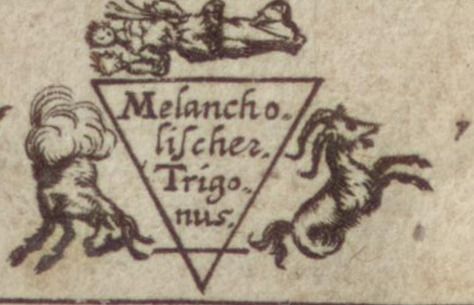
And then there’s the melancholic triangle, with Capricorn, Taurus, and Virgo.
Sanguine, choleric, phlegmatic, and melancholic are the four temperaments, which were determined by everyone’s personal balance of the four bodily humors: blood, choler, phlegm, and black bile. Astrology and medicine were closely connected during the medieval and early modern periods, and physicians believed that the temperaments could be influenced by and had certain affinities with the astrological signs. These four diagrams show which signs corresponded to which of the four temperaments. Which one are you?
97 notes
·
View notes
Photo
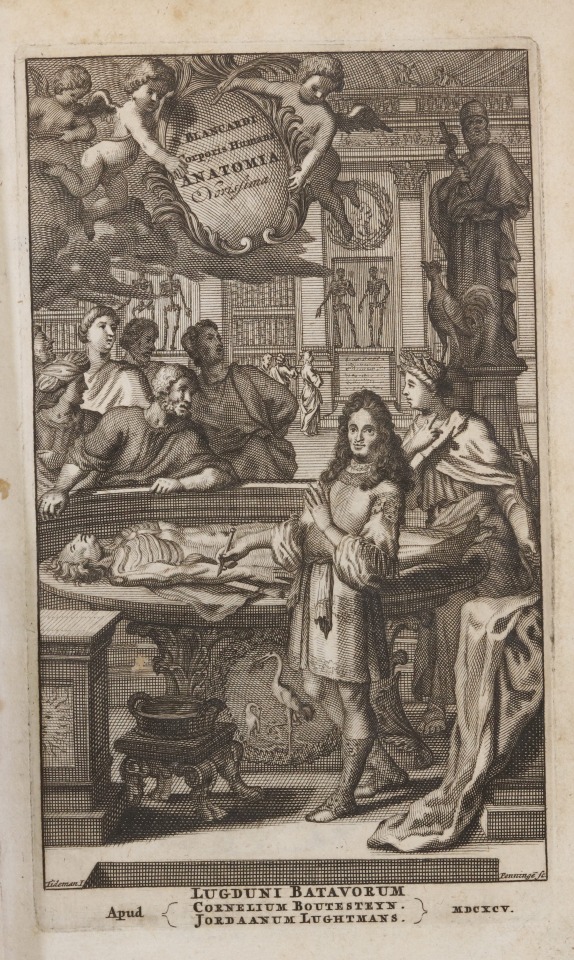
We’re closing out this week with Frontispiece Friday. This is a classic example of an anatomical frontispiece using the early modern convention of portraying an anatomist in the midst of performing a dissection with his own hands. In this case, the anatomist in question is Steven Blankart, who is accompanied by a number of figures in classical dress. The woman directly behind him is probably Hygeia, one of the daughters of Asclepius, who carries the staff associated with her father. A statue of Asclepius himself is behind her, accompanied by the rooster that was traditionally seen as payment for his services. As for the other figures, the one leaning forward might be Galen or Hippocrates, and the gentleman wearing a turban might be Avicenna?
24 notes
·
View notes
Photo

While it is always a good idea to keep your kitchen clean, you might have been a bit more conscientious than usual over the past several months. On this Throwback Thursday, we’re bringing you this 1944 advertisement from the popular health magazine Hygeia for Mikroklene, a disinfectant than can leave your cutlery “germicidally clean.” It sounds rather intense!
14 notes
·
View notes
Photo


Happy Woodcut Wednesday! This week we’re focusing on the mandrake, a plant that is often associated with occult preparations. One of the most well-known folktales regarding the mandrake is that the root is shaped like a human and that it cries out once you pluck it from the ground. But did you know that there are also supposedly male and female mandrakes? These images from our evergreen favorite herbal, the New Kreüterbuch of Pietro Mattioli, show the female mandrake (top) and the male mandrake (bottom).
63 notes
·
View notes